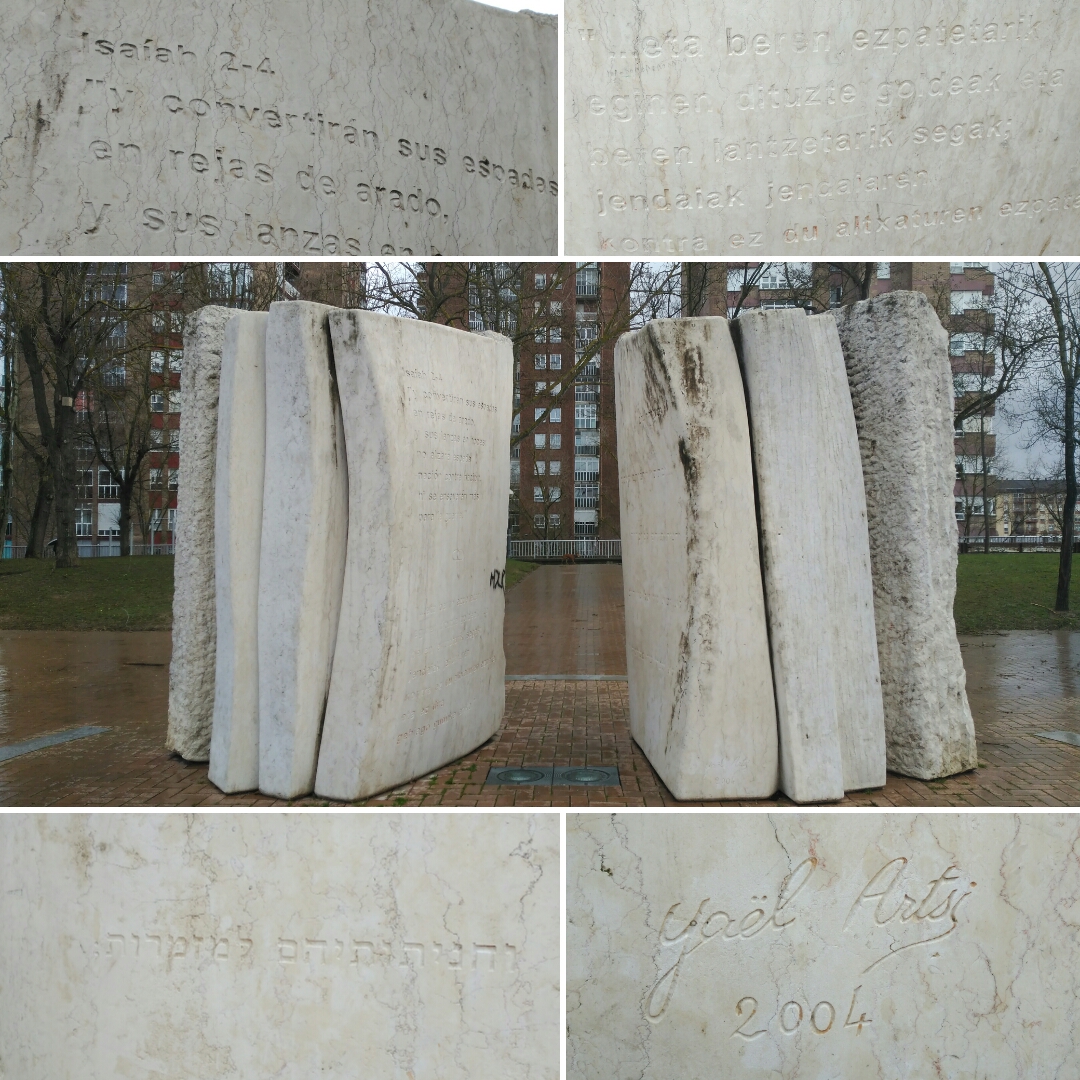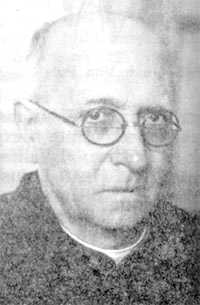|
Ramiro De Maeztu
Ramiro de Maeztu y Whitney (4 May 1875 – 29 October 1936) was a prolific Spanish essayist, journalist and publicist. His early literary work adscribes him to the Generation of '98. Adept to Nietzschean and Social Darwinist ideas in his youth, he became close to Fabian socialism and later to distributism and social corporatism during his spell as correspondent in London from where he chronicled the Great War. During the years of the Primo de Rivera dictatorship he served as Ambassador to Argentina. A staunch militarist, he became at the end of his ideological path one of the most prominent far-right theorists against the Spanish Republic, leading the reactionary voices calling for a military coup. A member of the cultural group '' Acción Española'', he spread the concept of "''Hispanidad''" (''Spanishness''). Imprisoned by Republican authorities after the outbreak of the Spanish Civil War, he was killed by leftist militiamen during a ''saca'' in the midst of the confli ... [...More Info...] [...Related Items...] OR: [Wikipedia] [Google] [Baidu] |
Vitoria-Gasteiz
Vitoria-Gasteiz (; ; also historically spelled Vittoria in English) is the seat of government and the capital city of the Basque Country (autonomous community), Basque Country and of the provinces of Spain, province of Álava in northern Spain. It holds the autonomous community's Basque Parliament, House of Parliament, the headquarters of the Government, and the Lehendakari, Lehendakari's (Prime Minister's) official residency. The municipality—which comprises not only the city but also the mainly agricultural lands of 63 villages around—is the largest in the Basque Country, with a total area of , and it has a population of 261,494 (January 2025). The dwellers of Vitoria-Gasteiz are called ''vitorianos'' or ''gasteiztarrak'', while traditionally they are dubbed ''babazorros'' (Basque language, Basque for 'bean sacks'). Vitoria-Gasteiz is a dynamic city with strengths in healthcare, aeronautics, the automotive industry, and viticulture. It is the first Spanish municipality to be ... [...More Info...] [...Related Items...] OR: [Wikipedia] [Google] [Baidu] |
Great War
World War I or the First World War (28 July 1914 – 11 November 1918), also known as the Great War, was a World war, global conflict between two coalitions: the Allies of World War I, Allies (or Entente) and the Central Powers. Fighting took place mainly in European theatre of World War I, Europe and the Middle Eastern theatre of World War I, Middle East, as well as in parts of African theatre of World War I, Africa and the Asian and Pacific theatre of World War I, Asia-Pacific, and in Europe was characterised by trench warfare; the widespread use of Artillery of World War I, artillery, machine guns, and Chemical weapons in World War I, chemical weapons (gas); and the introductions of Tanks in World War I, tanks and Aviation in World War I, aircraft. World War I was one of the List of wars by death toll, deadliest conflicts in history, resulting in an estimated World War I casualties, 10 million military dead and more than 20 million wounded, plus some 10 million civilian de ... [...More Info...] [...Related Items...] OR: [Wikipedia] [Google] [Baidu] |
Navarre
Navarre ( ; ; ), officially the Chartered Community of Navarre, is a landlocked foral autonomous community and province in northern Spain, bordering the Basque Autonomous Community, La Rioja, and Aragon in Spain and New Aquitaine in France. The capital city is Pamplona (). The present-day province makes up the majority of the territory of the medieval Kingdom of Navarre, a long-standing Pyrenean kingdom that occupied lands on both sides of the western Pyrenees, with its northernmost part, Lower Navarre, located in the southwest corner of France. Navarre is in the transition zone between the green Cantabrian Coast and semi-arid interior areas and thus its landscapes vary widely across the region. Being in a transition zone also produces a highly variable climate, with summers that are a mix of cooler spells and heat waves, and winters that are mild for the latitude. Navarre is one of the historic Basque provinces: its Basque features are conspicuous in the north, but vi ... [...More Info...] [...Related Items...] OR: [Wikipedia] [Google] [Baidu] |
Cienfuegos
Cienfuegos (), capital of Cienfuegos Province, is a city on the southern coast of Cuba. It is located about from Havana and has a population of 178,368 in 2022. Since the late 1960s, Cienfuegos has become one of Cuba's main industrial centers, especially in the energy and sugar sectors. The city is dubbed ''La Perla del Sur'' (Pearl of the South). Despite being known as an industrial city of factories and various nuclear/electrical plants, and the name ''Cienfuegos'' literally translating to "one hundred fires" (''cien'', "one hundred"; ''fuegos'', "fires"), the city actually takes its name from the surname of Asturian-born José Cienfuegos Jovellanos, Captain General of Cuba (1816–19). Between the end of the 19th century and the beginning of the 20th century, the city was settled by many Spaniards, mainly Catalans and Asturians who amassed fortunes as businessmen in different branches, other few of them obtained in the sugar industry, they became rich during their stay in Cu ... [...More Info...] [...Related Items...] OR: [Wikipedia] [Google] [Baidu] |
Cuba
Cuba, officially the Republic of Cuba, is an island country, comprising the island of Cuba (largest island), Isla de la Juventud, and List of islands of Cuba, 4,195 islands, islets and cays surrounding the main island. It is located where the northern Caribbean Sea, Gulf of Mexico, and Atlantic Ocean meet. Cuba is located east of the Yucatán Peninsula (Mexico), south of both Florida and the Bahamas, west of Hispaniola (Haiti/Dominican Republic), and north of Jamaica and the Cayman Islands. Havana is the largest city and capital. Cuba is the List of countries and dependencies by population, third-most populous country in the Caribbean after Haiti and the Dominican Republic, with about 10 million inhabitants. It is the largest country in the Caribbean by area. The territory that is now Cuba was inhabited as early as the 4th millennium BC, with the Guanahatabey and Taino, Taíno peoples inhabiting the area at the time of Spanish colonization of the Americas, Spanish colonization ... [...More Info...] [...Related Items...] OR: [Wikipedia] [Google] [Baidu] |
Vitoria, Spain
Vitoria-Gasteiz (; ; also historically spelled Vittoria in English) is the seat of government and the capital city of the Basque Country and of the province of Álava in northern Spain. It holds the autonomous community's House of Parliament, the headquarters of the Government, and the Lehendakari's (Prime Minister's) official residency. The municipality—which comprises not only the city but also the mainly agricultural lands of 63 villages around—is the largest in the Basque Country, with a total area of , and it has a population of 261,494 (January 2025). The dwellers of Vitoria-Gasteiz are called ''vitorianos'' or ''gasteiztarrak'', while traditionally they are dubbed ''babazorros'' (Basque for 'bean sacks'). Vitoria-Gasteiz is a dynamic city with strengths in healthcare, aeronautics, the automotive industry, and viticulture. It is the first Spanish municipality to be awarded the title of European Green Capital (in 2012) and it has been also recognized by the UN with th ... [...More Info...] [...Related Items...] OR: [Wikipedia] [Google] [Baidu] |
Spanish Civil War
The Spanish Civil War () was a military conflict fought from 1936 to 1939 between the Republican faction (Spanish Civil War), Republicans and the Nationalist faction (Spanish Civil War), Nationalists. Republicans were loyal to the Left-wing politics, left-leaning Popular Front (Spain), Popular Front government of the Second Spanish Republic. The opposing Nationalists were an alliance of Falangism, Falangists, monarchists, conservatives, and Traditionalism (Spain), traditionalists led by a National Defense Junta, military junta among whom General Francisco Franco quickly achieved a preponderant role. Due to the international Interwar period#Great Depression, political climate at the time, the war was variously viewed as class struggle, a War of religion, religious struggle, or a struggle between dictatorship and Republicanism, republican democracy, between revolution and counterrevolution, or between fascism and communism. The Nationalists won the war, which ended in early 1939, ... [...More Info...] [...Related Items...] OR: [Wikipedia] [Google] [Baidu] |
Hispanidad
(, typically translated as "Hispanicity") is a Spanish term describing a shared cultural, linguistic, or political identity among speakers of the Spanish language or members of the Hispanic diaspora. The term can have various, different implications and meanings depending on the regional, socio-political, or cultural context in which it is used. Hispanidad, which is independent of race, is the only ''ethnic'' category, as opposed to racial category, which is officially collated by the U.S. Census Bureau. The distinction made by government agencies for those within the population of any official race category, including "Black", is between those who report Hispanic backgrounds and all others who do not. ''Non-Hispanic Blacks'' consists of an ethnically diverse collection of all others who are classified as Black or African American that do not report Hispanic ethnic backgrounds. History The Hispanic model of identity and representation has been historically characterized by it ... [...More Info...] [...Related Items...] OR: [Wikipedia] [Google] [Baidu] |
Acción Española
Acción Española (, ''Spanish Action'') or AE was a Spanish cultural association active during the Second Spanish Republic, meeting point of the ultraconservative and far right intellectual figures that endorsed the restoration of the Monarchy. It was also a political magazine of the same name. The group was heavily influenced by ''Action Française'' both in its name and its ideology.Stanley G. Payne, ''Spain's First Democracy: The Second Republic, 1931-1936'', 1993, p. 171 Constituted in October 1931, the cultural association was inaugurated on 5 February 1932, Eduardo González Calleja, ''Contrarrevolucionarios. Radicalización violenta de las derechas durante la Segunda República, 1931-1936'', 2011, pp. 51-52 following the founding of the journal on 15 December 1931. Formation AE began life in December 1931 as a journal organised by doctrinaire monarchists. It was edited by Ramiro de Maeztu. Drawing in followers of the former Prime Minister Antonio Maura and the ultraconserv ... [...More Info...] [...Related Items...] OR: [Wikipedia] [Google] [Baidu] |
Military Coup
A military, also known collectively as armed forces, is a heavily armed, highly organized force primarily intended for warfare. Militaries are typically authorized and maintained by a sovereign state, with their members identifiable by a distinct military uniform. They may consist of one or more military branches such as an army, navy, air force, space force, marines, or coast guard. The main task of a military is usually defined as defence of their state and its interests against external armed threats. In broad usage, the terms "armed forces" and "military" are often synonymous, although in technical usage a distinction is sometimes made in which a country's armed forces may include other paramilitary forces such as armed police. Beyond warfare, the military may be employed in additional sanctioned and non-sanctioned functions within the state, including internal security threats, crowd control, promotion of political agendas, emergency services and reconstruction, pro ... [...More Info...] [...Related Items...] OR: [Wikipedia] [Google] [Baidu] |




